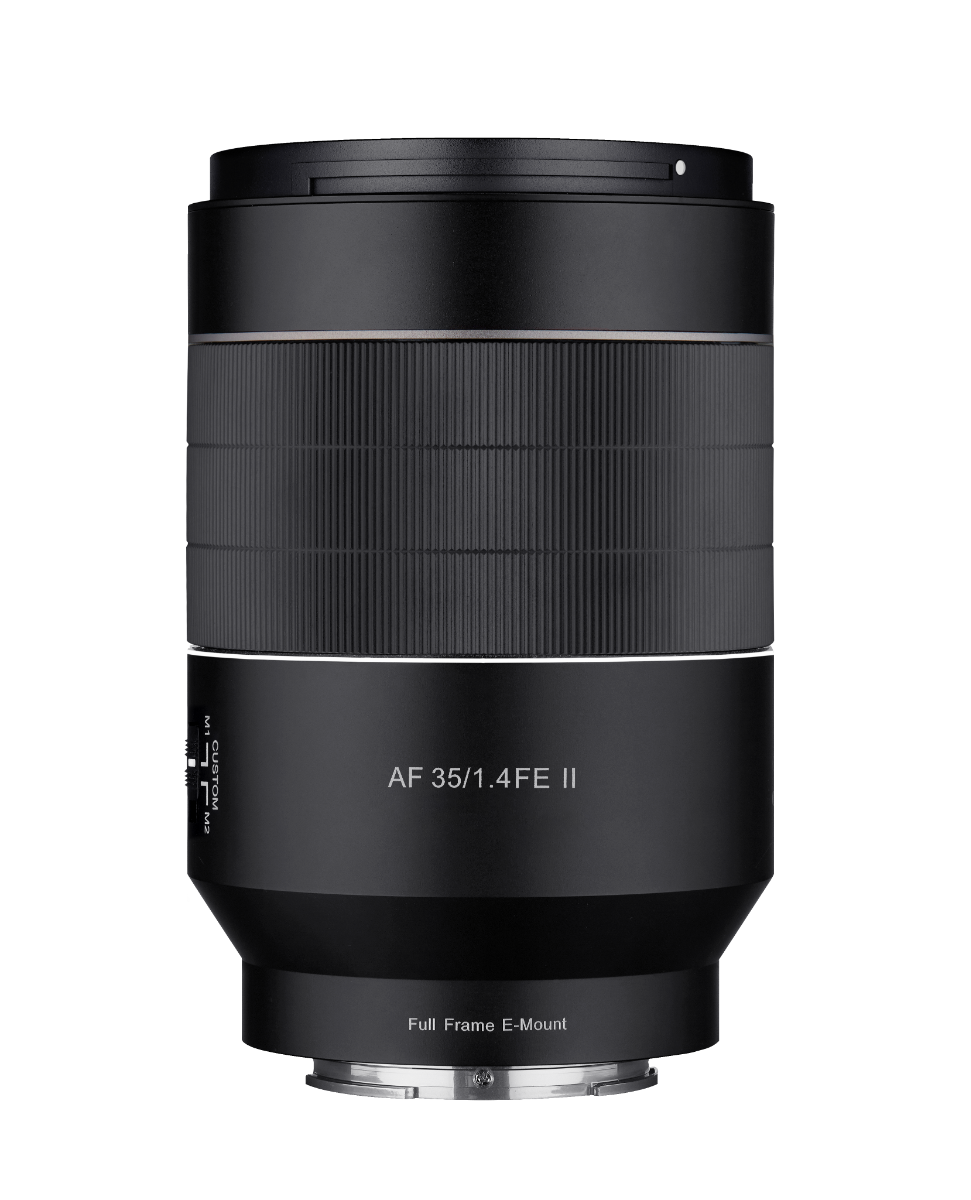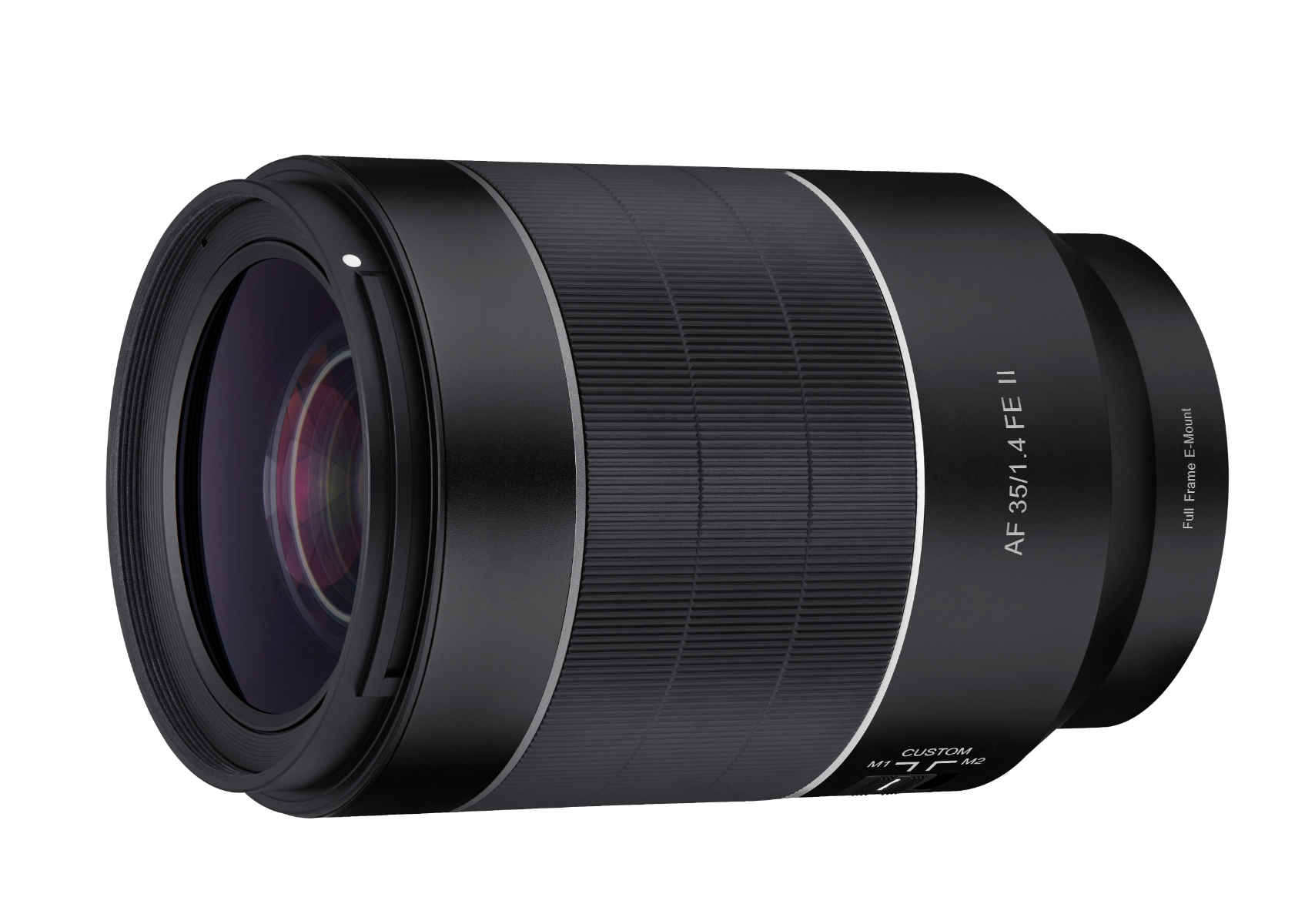Product Description
Samyang AF 35mm f1.4 II Lens for Sony E
- FE-Mount Lens/Full-Frame Format.
- Comfortable wide-angle focal length.
- Linear Super Sonic Motor AF System.
- Nine-Blade Diaphragm for beautiful rounded bokeh.
- Two Aspherical Elements, Two HR Elements.
- Weight 645g.

Amazing Resolution – Sharp and clear corner to corner
The 2 ASP (aspherical) elements in this new AF 35mm F1.4 FE II lens deliver stunning contrast and amazing resolution. Samyang's advanced coating technology maintains superb image clarity, even in challenging lighting conditions. The corner-to-corner sharpness is maintained even at maximum aperture, so optical performance is consistent at all exposure settings.
Extremely narrow depth of field and beautiful bokeh
The F1.4 maximum aperture of this new AF 35mm F1.4 FE II lens makes it easier to capture clear images in low light, even when shooting handheld. A 9-blade circular aperture design enhances its capability for stunningly beautiful background bokeh when desired. Smooth bokeh can make subjects stand out in images with deep dimensional impact.

Enhanced Operation and Reliability
Important features of the AF 35mm F1.4 FE II include a customisable Focus Hold Button and Custom Switch. Overall, this is a lens that meets professional requirements for control and reliability, for both stills and videos

Short minimum focus distance (29cm)
Minimum focus distance is just 29cm (0.95ft), making the lens even more versatile. It is possible to produce unique perspective close to the subject and makes it easier to take portraits with exaggerated features, food on tables, etc.

Modern design and weather-sealing
The AF 35mm F1.4 FE II has been developed and enhanced, taking into consideration not only the design but also the user’s shooting environment. It has an aluminium focus ring, which feels great to operate and the weather-sealing (in 4 areas) also protects the lens from light rain, snow and dust





















